The Samurai Bond Market - An Overview
01/20/2016
This document is subject to the Disclaimer in the Disclaimer Page linked above. Please read the Disclaimer in it's entirety.
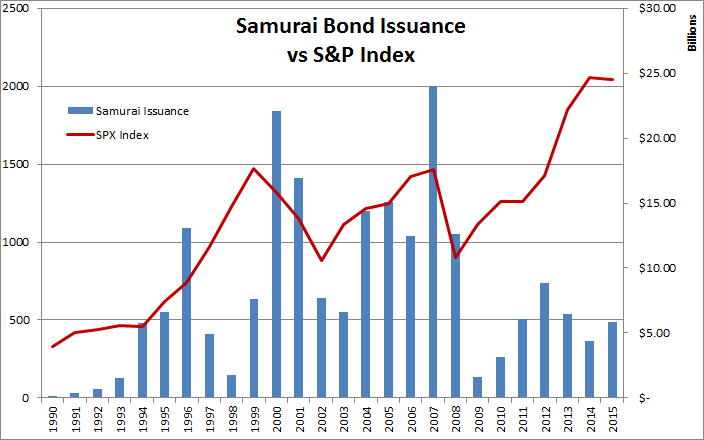
Source: Bloomberg, MBS Mantra, LLC
Summary
I have discussed the Yen Carry Trade and the Samurai bond market many times over the years. Samurai bonds are a component of the Yen Carry Trade, and fund many of the activities of the US Financial sector.
The dominant sector using the Samurai bonds is Finance, and I suspect much of this debt counted as capital for most of the issuers. Since financial firms operate with very high leverage, the multiplier effect of this debt cannot be ignored.
This study contains a lot of data that is not commonly known. It provides evidentiary support to the analysis I perform in a forthcoming study of the Carry Trade. As I will discuss in the article on the Carry trade, the Samurai bond market has been an important component in the Failure of domestic Monetary Policy by the central banks.
The Samurai Bond Market is important to monitor in the context of the Global Financial Crisis, as it funded many of the excesses in the periods leading to the collapse in the markets. It continues to be relevant today.
A Brief History
Samurai bonds refer to debt instruments sold in Japan by foreign issuers. Typically, they are issued by US corporations, but they are also issued by Japanese institutions that might have operations in the US, such as Banks, and financing arms of Automobile Manufacturers. Sovereign nations also sometimes issue Samurai bonds.
The euroyen market is also another source of borrowing for issuers, but starting in the 1990s, the samurai market began dominating the euroyen market.
While there was some research on Samurai bonds done in the 1990s, most of it focused on the credit risk and pricing of these bonds (especially after the elimination of the minimum rating requirement), as the majority of the purchasers were individuals. I have yet to find any research that connects the Samurai bond markets to the Yen Carry trade, or any analyses of the impact this market has had on borrowing nations.
Some of my numbers and information come from 2 articles by Frank Packer (both linked below). Most of my quotes are also from the Packer articles.
Some of my numbers and information come from 2 articles by Frank Packer (both linked below). Most of my quotes are also from the Packer articles.
Samurai bonds are permitted by the Ministry of Finance to “facilitate the recycling of Japan’s trade surplus”. “As policies were liberalized, in an effort to increase the use of Yen as an international currency”, issuance picked up, with lower rated borrowers also getting access.
The first issuance was by the Asian Development Bank in 1970. The first sovereign issue was in 1972 for Australia, and the first private issue was in 1979 for Sears Roebuck.
Data Source: Bloomberg.
I do not have data earlier than 1990; in any case, I am only interested in the periods leading up to and after the initiation of the Yen Carry Trade in 1994.
Samurai Issues from 1990 to 2015
Since 1990, there have been almost 3000 issues, totaling over $210BB, by approximately 132 issuers. (I am missing the issuance size data for 12 issues.) I have also tried to consolidate related names, for example, combining AIG wih AIG Financial Products. As I mentioned, Finance has been the dominant sector.
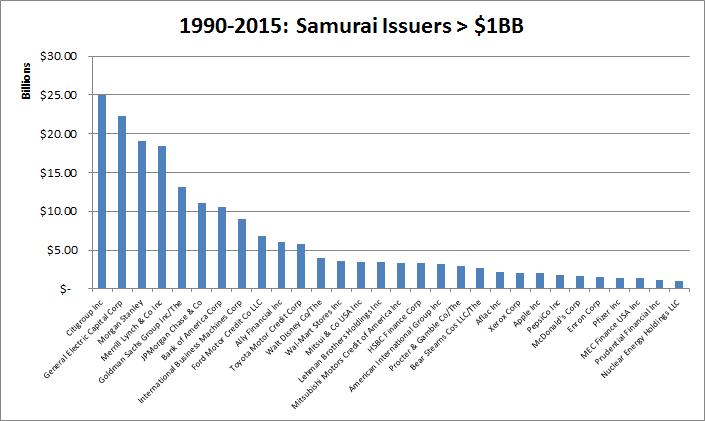
Source: Bloomberg, MBS Mantra, LLC
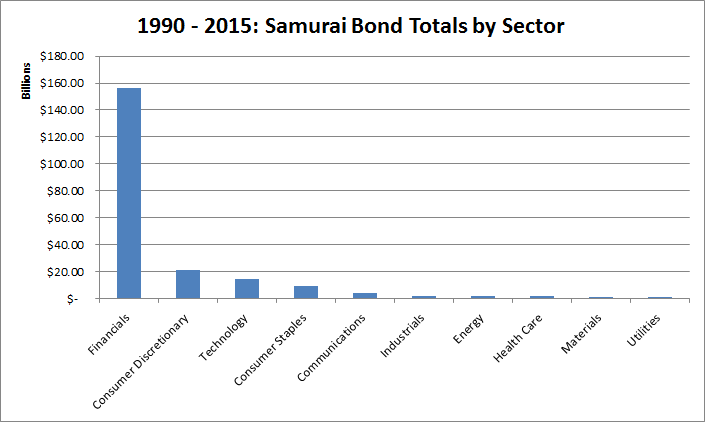
Source: Bloomberg, MBS Mantra, LLC
Samurai Issues from 1990 to 1993
From 1990 to the end of 1993, there were only 29 Samurai issues, by 16 issuers (after consolidation of tickers), totaling $2.7BB. Goldman Sachs was the largest issuer, totaling $515BB. There were only 4 sectors represented, with the largest sector being Financials.
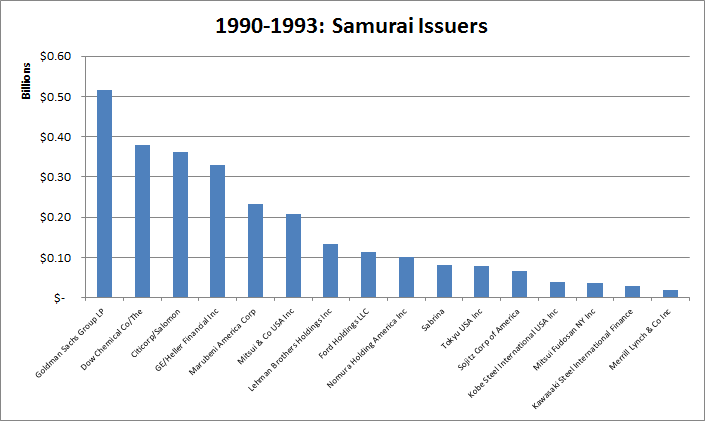
Source: Bloomberg, MBS Mantra, LLC
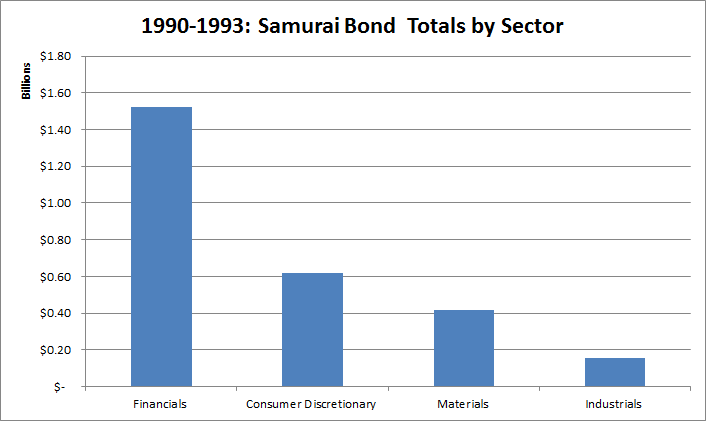
Source: Bloomberg, MBS Mantra, LLC
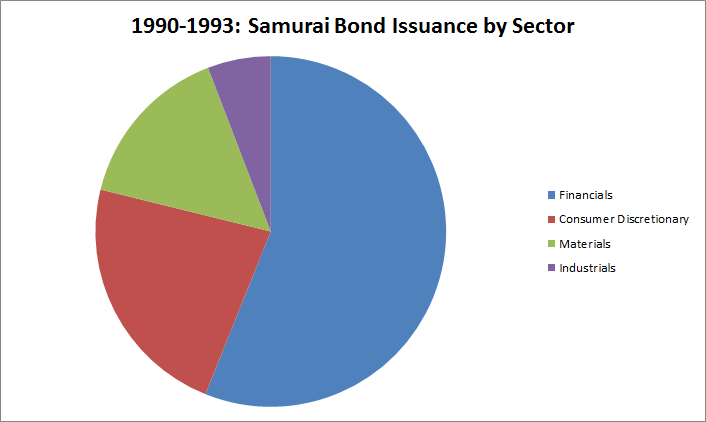
Source: Bloomberg, MBS Mantra, LLC
Samurai Issues from 1994 to 1999
From 1994 to the end of 1999, there were over 700 issues, totaling over $40BB. The number of issuers also grew to 65, as did the sectors that issued. Financials still dominated, with over 50% of all the volume.
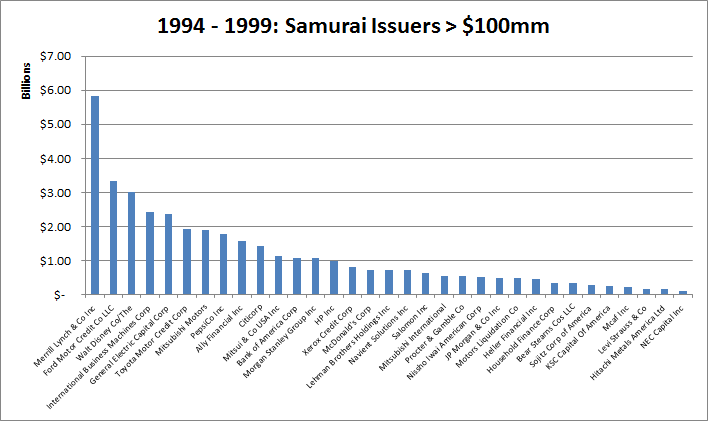
Source: Bloomberg, MBS Mantra, LLC
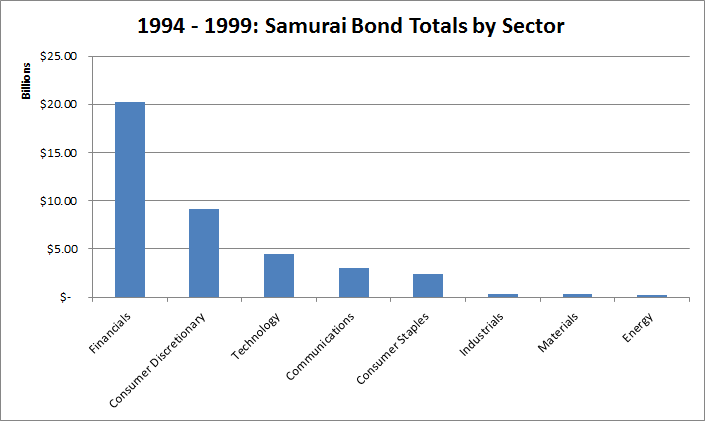
Source: Bloomberg, MBS Mantra, LLC
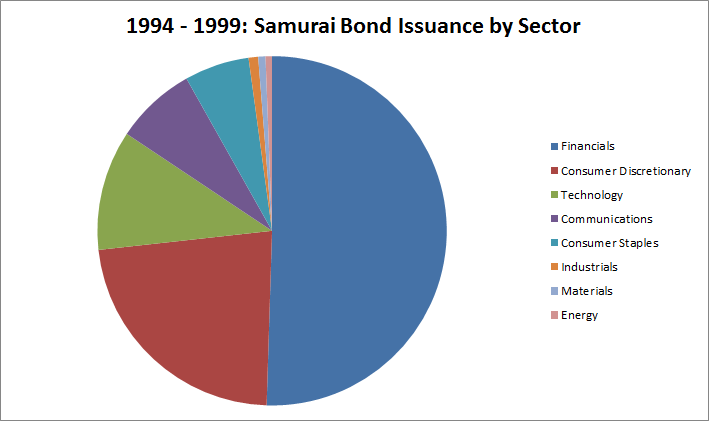
Source: Bloomberg, MBS Mantra, LLC
Samurai Issues from 2000 to September 2008 (Lehman Bankruptcy)
From 2000 till the Lehman bankruptcy, there were over 1300 issues, totaling over $136BB. The size of the deals issues grew as did the number of issuers and their frequency of issuance, to 77, along with the number of sectors participating. Financials dominated, with over 77% of all the volume!
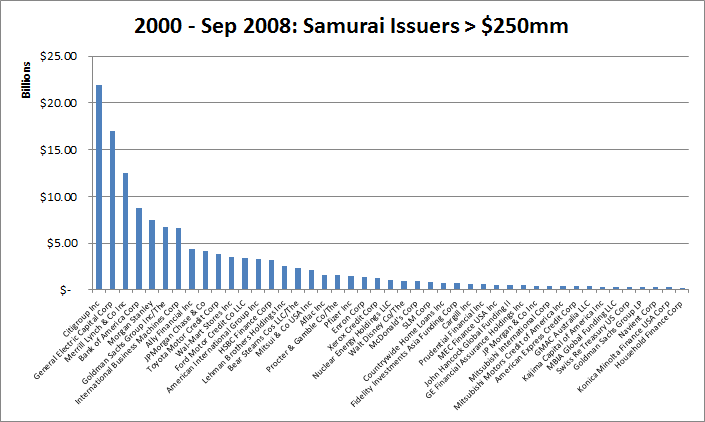
Source: Bloomberg, MBS Mantra, LLC
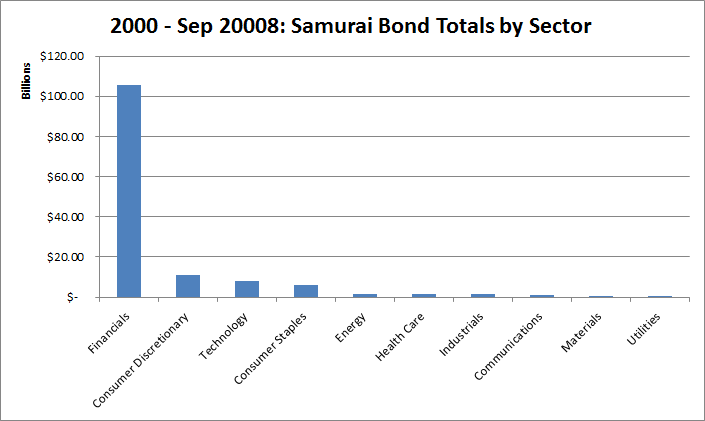
Source: Bloomberg, MBS Mantra, LLC
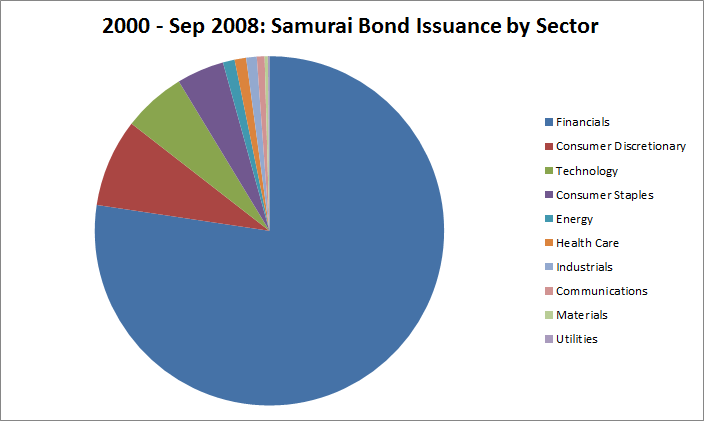
Source: Bloomberg, MBS Mantra, LLC
Samurai Issues from October 2008 to 2015
After the Lehman bankruptcy, especially once the US cut rates, Samurai issuance slowed down, with 215 issues since October 2008 to the present. Only $32BB has been issued, in only 3 sectors, primarily by Financials, as they needed to raise capital.
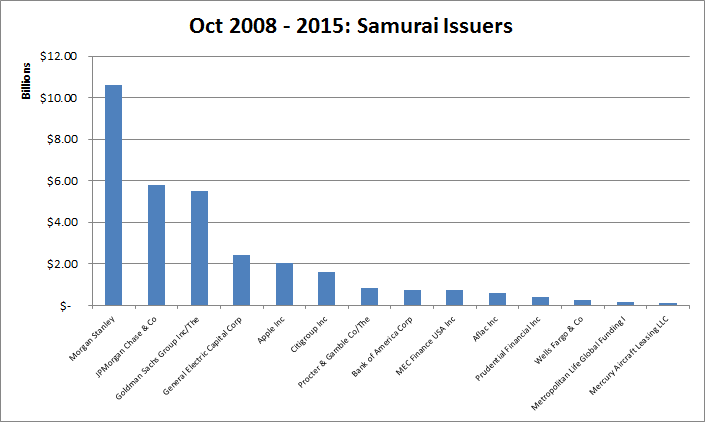
Source: Bloomberg, MBS Mantra, LLC
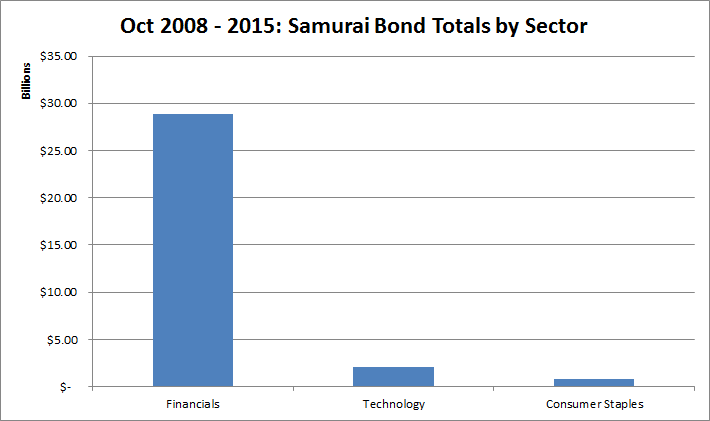
Source: Bloomberg, MBS Mantra, LLC
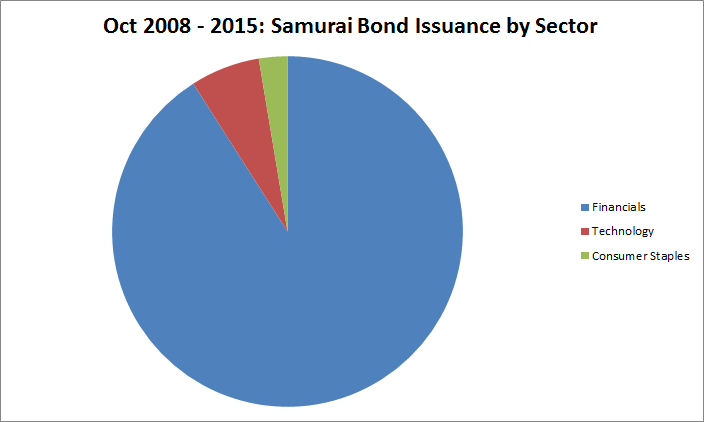
Source: Bloomberg, MBS Mantra, LLC
Issuance Patterns by the Large Issuers.
What is also fascinating is the pattern of issuance by specific companies, especially the Financials. Below are some examples.
Note that the sporadic super-sized issues that are greater than $400mm are displayed on the right axis. The timing of many of these merits some further research!
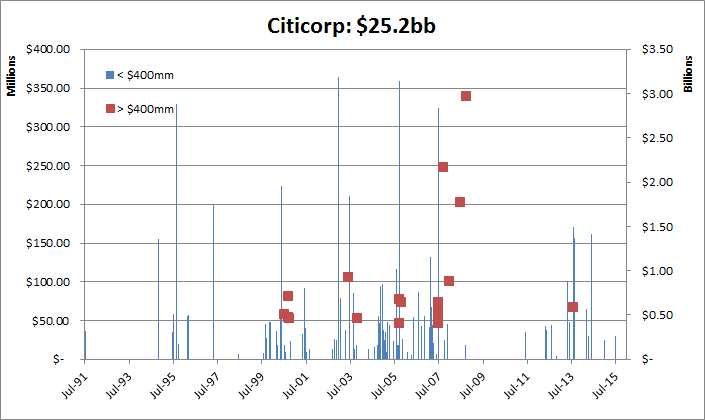
Source: Bloomberg, MBS Mantra, LLC
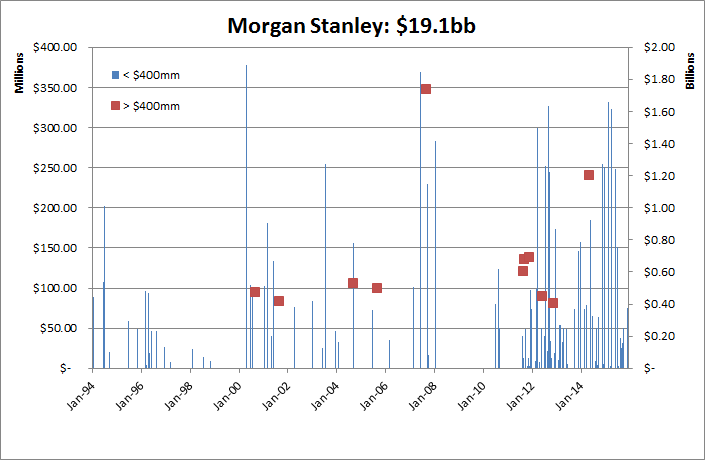
Source: Bloomberg, MBS Mantra, LLC
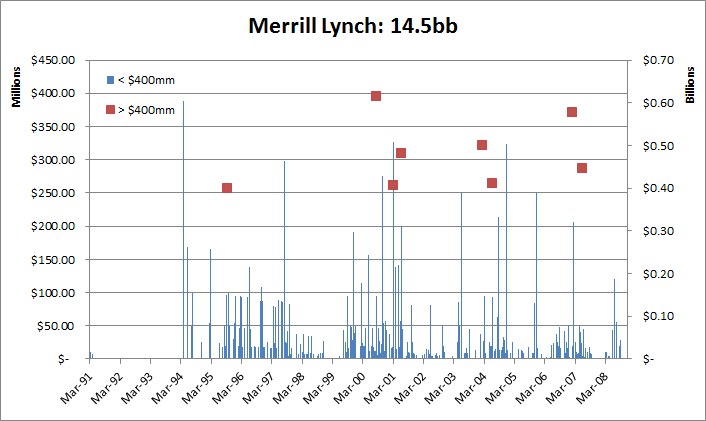
Source: Bloomberg, MBS Mantra, LLC
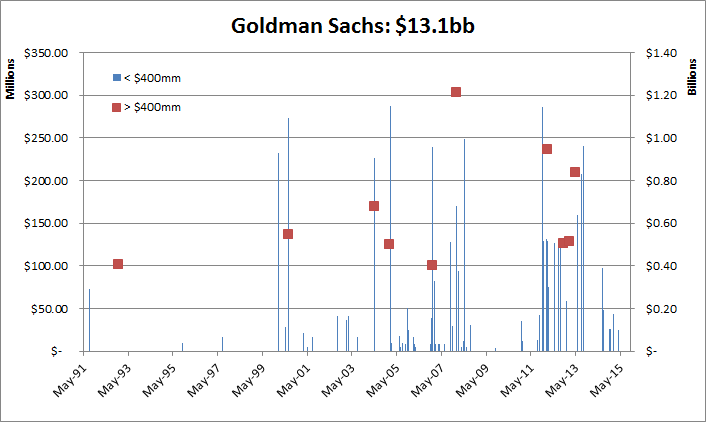
Source: Bloomberg, MBS Mantra, LLC
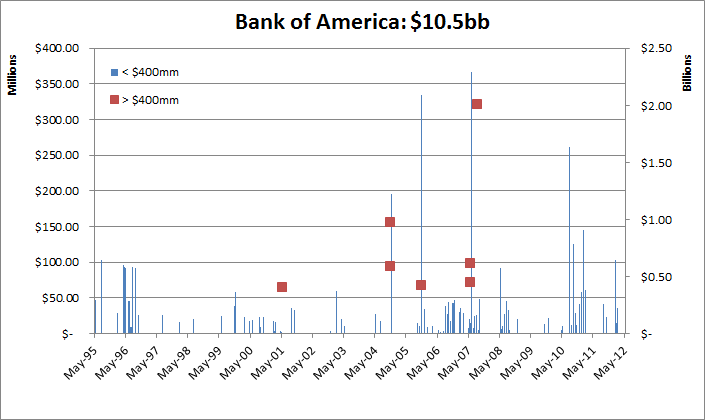
Source: Bloomberg, MBS Mantra, LLC
Samurai Bonds Outstanding
This is a month by month analyis of issue dates vs maturity dates, aggregating the bonds that should be outstanding. It is an estimate, as some bonds were callable, and actual calls were not tracked. Also, I collected raw issuer data in USD, converted from Yen at the time of issuance - this will also distort the numbers if you are trying to convert back into Yen.
2/5/2016
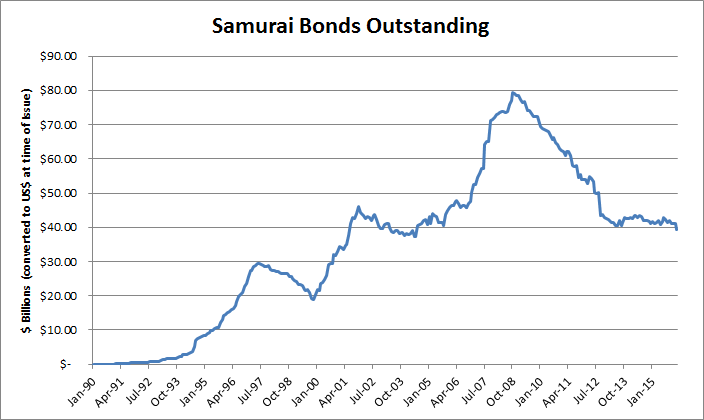
Source: Bloomberg, MBS Mantra, LLC
